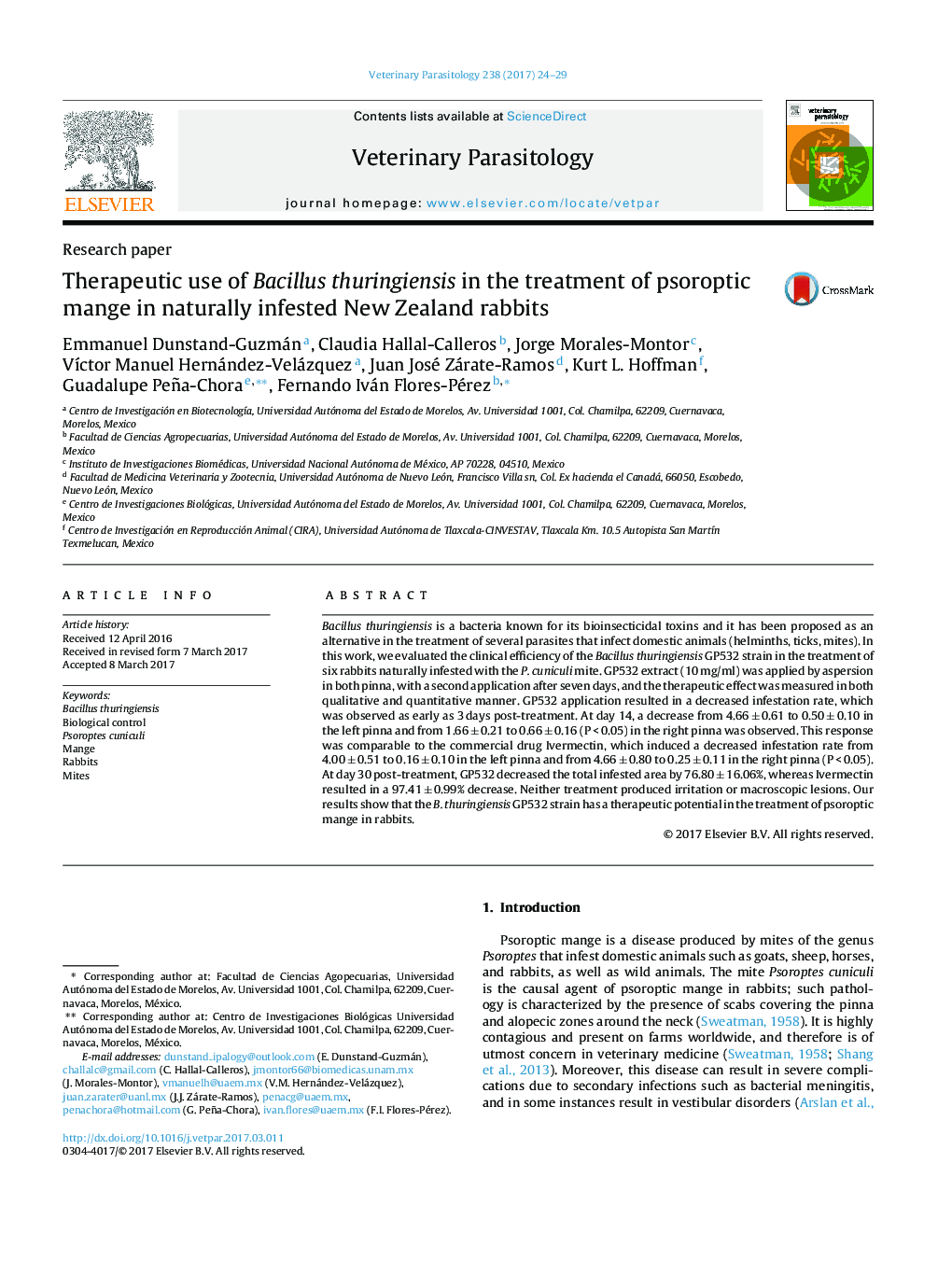| Article ID | Journal | Published Year | Pages | File Type |
|---|---|---|---|---|
| 5545734 | Veterinary Parasitology | 2017 | 6 Pages |
â¢B. thuringiensis is used as an effective biological control strategy.â¢Treatment of P. cuniculi mange with GP532 strain in rabbits diminished the number of scabs and mites.â¢B. thuringiensis GP532 strain can be a safe alternative in psoroptic mange.
Bacillus thuringiensis is a bacteria known for its bioinsecticidal toxins and it has been proposed as an alternative in the treatment of several parasites that infect domestic animals (helminths, ticks, mites). In this work, we evaluated the clinical efficiency of the Bacillus thuringiensis GP532 strain in the treatment of six rabbits naturally infested with the P. cuniculi mite. GP532 extract (10 mg/ml) was applied by aspersion in both pinna, with a second application after seven days, and the therapeutic effect was measured in both qualitative and quantitative manner. GP532 application resulted in a decreased infestation rate, which was observed as early as 3 days post-treatment. At day 14, a decrease from 4.66 ± 0.61 to 0.50 ± 0.10 in the left pinna and from 1.66 ± 0.21 to 0.66 ± 0.16 (P < 0.05) in the right pinna was observed. This response was comparable to the commercial drug Ivermectin, which induced a decreased infestation rate from 4.00 ± 0.51 to 0.16 ± 0.10 in the left pinna and from 4.66 ± 0.80 to 0.25 ± 0.11 in the right pinna (P < 0.05). At day 30 post-treatment, GP532 decreased the total infested area by 76.80 ± 16.06%, whereas Ivermectin resulted in a 97.41 ± 0.99% decrease. Neither treatment produced irritation or macroscopic lesions. Our results show that the B. thuringiensis GP532 strain has a therapeutic potential in the treatment of psoroptic mange in rabbits.
